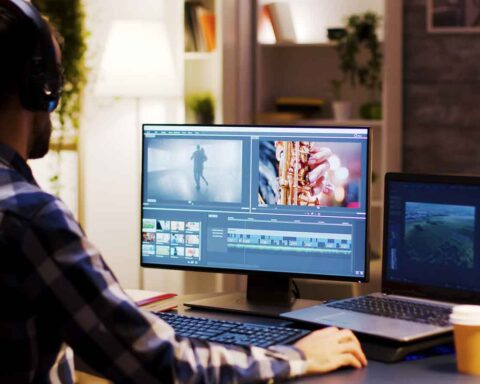Every project has a budget and it’s always less than you’d like. Your finance team will do their best to minimize the cost of getting your money (gap financing, cash flow financing, completion bond, etc.), but it’s your job to deliver quality content within your budget.
You and the other creatives on the project need to come together to come up with ways to deliver what’s on the page without just throwing money at it. That means being creative with how you spend money.
In this article, I’d like to talk about how you can work with the budget you have without sacrificing too much of your production value and creative vision.
Preparation is Key
Being prepared is a critical way to reduce your costs without disrupting your production value, but I see people show up unprepared all the time. Instead of working steadily toward a goal, they waste time when it costs the most.
Actors need to show up with an understanding of their character and how their scenes fit into the overall story. They need to know their lines (or to have at least read them before – read that with a big spoon full of sarcasm). Writers need to produce a finished draft on time. Directors need to know what they’re going to shoot and how they will block it and light it.
Professionals make decisions in prep, not on shooting day. Photography is for execution, not “inspiration.” Deviation, last minute dialogue changes (“pages”) and spur-of-the-moment creativity are all fine, but you need a plan in place so you don’t waste time and money screwing around.
How to Trim Expenses

If your finance people tell you that your movie is too expensive, your only alternative is to shave down your costs. Here’s a list of the primary ways you can bring those expenses down. (Yes, some of them involve changing your material, but sometimes you don’t have a choice.)
1. Reduce the number of shooting days
This is the most impactful way to reduce your costs. On a $5 million film, you could be spending $125,000 per day. Could you reduce a 20-day shoot to 18 day and not sacrifice creative? Shaving off two days is a quarter million dollar savings.
How do you reduce shooting days? By either abandoning some setups or finding ways to work more efficiently.
2. Eliminate locations and travel
This is a big expense, especially if you have a big crew. Travel and accommodations will eat away your budget in big bites. Instead, stick to your local areas. If you’re in LA, shoot in LA. The typical cost of traveling and housing each cast or crew member for 25 days is no less that 20 grand per person.
3. Fewer speaking roles
You can’t cut actor fees below scale. They are union, after all, so there’s a floor to their daily rate. But you can shave off some cost by using them wisely. Actors with speaking roles are paid considerably more than non-speaking actors. Can you reduce the number of characters? Merge some together? Put lines in actors who are already on payroll. But for God’s sake, don’t have a speaking role talk to an extra and have the extra shrug or some other stupid gesture that has no dialogue! It just looks fucking stupid.
4. Consolidate or eliminate story elements
Depending on your script, you may be able to swap out expensive elements for affordable ones without impacting the story.
For instance, it’s astronomically expensive to shoot inside an airport or train station. Those are busy locations that cost a ton to rent. Then you have to fill them with your own extras. Restaurants are hard too with all the people, food, and drinks. These locations are expensive and limit the number of setups you can get in a day. These are totally obvious, but there are other examples as well.
5. Reduce the crew size
While many unions have minimum staffing requirements that you can’t avoid, you may have some room to reduce the overall size of your team. Reducing a 60 person crew down to 50 can represent a huge cost savings. On a 20 day shoot, the catering alone will shave over $4,000.
If you’re working on a non-union shoot, trim your crew as much as possible. Realistically, you only need a director, camera person, sound person, and an actor. The rest is gravy, a very different movie than a crew of 100, but still a movie that can be impactful if your story and actors are good.
Reducing the crew size can have non-compensation effects as well. Smaller crews need less catering, less transportation, and less office space. And the list goes on…
Just be careful here. You still need plenty of talented people to produce good work. If you cut out too many, you might be forced to make creative decisions that compromise your project.
6. Fewer vanities
Your vanities are elements that are nice to have and certainly make a better movie, but aren’t essential to tell the story. It includes wardrobe, set decoration, construction, props, etc.
For instance, does the story need to be a period piece? Those costumes are expensive. Or could you tell the same story in the present day with modern clothing? In fact, you could ask some of the actors to provide their own wardrobe on down-and-dirty projects.
Do you have to build a set? Or is there somewhere nearby that you can rent for significantly less? Be willing to change the inconsequential details of your story a little bit to save money (i.e., cafe vs. bar, bank vs. post office, high school vs. elementary school).
7. Post production and effects
Unless you’re talking about huge stunts with serious safety concerns, it’s almost always cheaper to create practical effects than digital ones. Of course, you should always ask yourself if the effects are integral to the story, or if you just want them because they’re cool.
You can’t skip on editing, of course. A good editor is always worth the money. But you still have some play here. A post production facility will render your cut in eight hours, but the computer at your editor’s house will do it in two days for a fraction of the price.
8. Consolidate prep and wrap time
This isn’t a huge cost savings (maybe 1% or 2% of the total budget), but you may be able to work faster and more efficiently during prep and wrap. This is especially true if you use some of the other cost saving measures on this list. For instance, less travel means less time preparing for travel.
Doesn’t All That Ruin the Story?

You might be thinking, “Oh, he’s just a money guy who doesn’t care about the story. Removing all that stuff will ruin my vision!” I have only one thing to say to that – GROW UP snot-nose. You can stand on every creative point that your “vision” calls for and NEVER make your movie or you can think creatively and get your picture made. Your choice! Toil in obscurity (bitter, on your couch, in your tighty whities) or work with creatives to get shit made.
Frankly, I disagree with compromising is creative caving. In fact, I strongly believe that constraint is healthy for creative people. It forces them to come up with innovative solutions that make their content unique. Doing more with less is a key way to get noticed by the big financiers in the industry, especially if you can make it work while still producing great content.
For instance, a drone is a cool way to get semi-aerial shots. But drones are expensive. You know what isn’t expensive? 10 feet of PVC pipe and a roll of duct tape. Both solutions will get your camera high. But one costs $12, the other costs $1,200.
Minimizing and removing elements of your content doesn’t mean compromising the story if you’re a good storyteller. One of the biggest mistakes young filmmakers make is thinking in terms of what they see and like. They want all the bells and whistles that cost a lot of money.
There’s nothing wrong with that, of course. I also wanted to make bigger movies when I was younger. But if the resources aren’t there, you have to make do.
The people who are responsible for buying content and hiring creatives respond to quality stories that are interesting and different. No one judges you for lacking resources early in your career. Of course you’re broke! They just want a good story. But they will judge you if you do have lots of resources and still turn out a shit movie.
Focus on What Matters
As a filmmaker (or content creator of another variety) without access to a lot of resources, I recommend focusing on three qualities:
- Your voice. Make it original and unique. Don’t try to copy another creator.
- Your material. The story is everything. Fancy effects and CGI won’t save a bad story.
- Your actors. Enlisting the right people will bring your story to life.
If you get those three elements right, you’re bound to make great content, regardless of how much cash you have to spend on flashy effects, exotic locations, and big casts. Remember: The story is most important. Tell great stories and big budgets will come.






